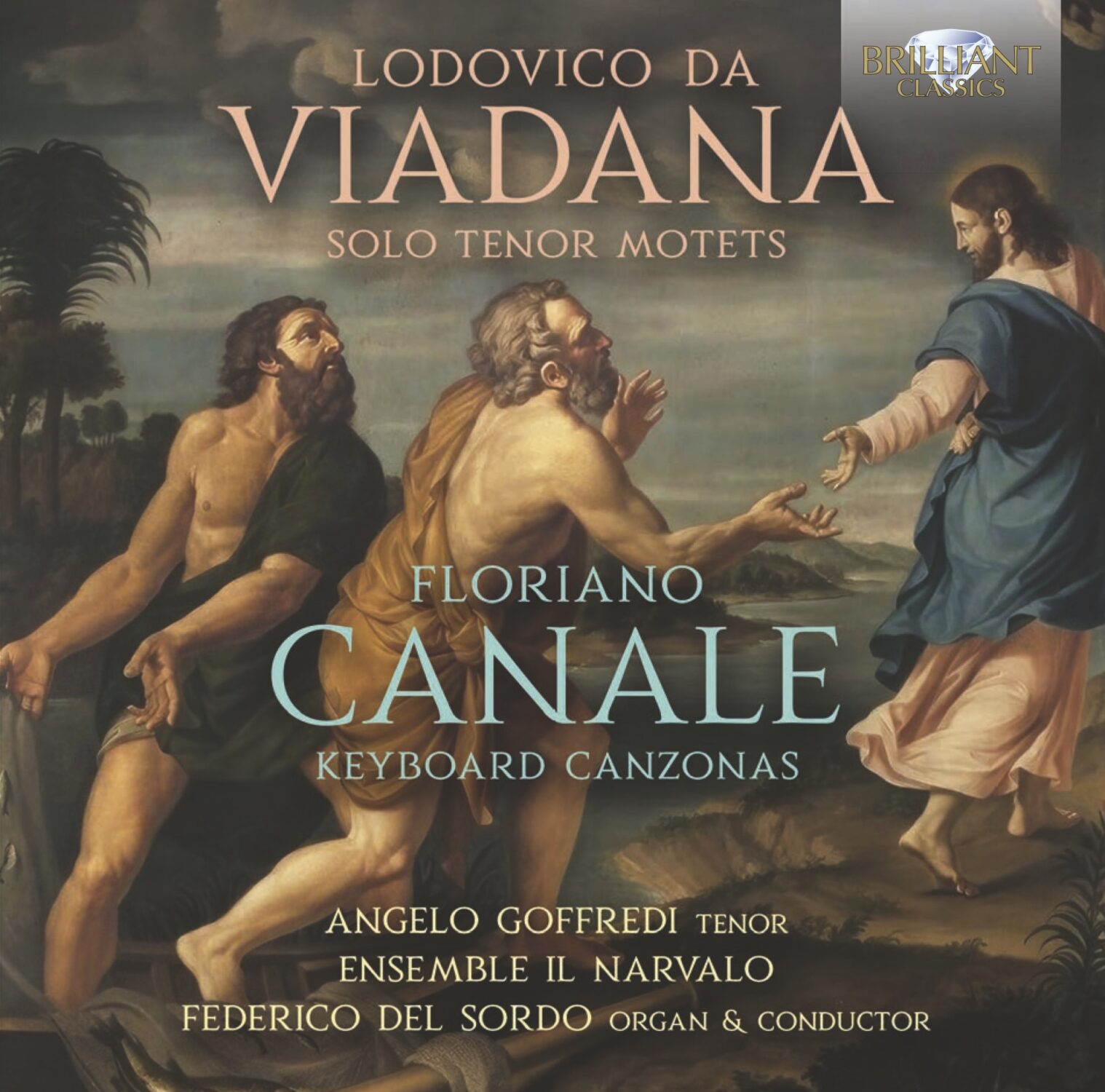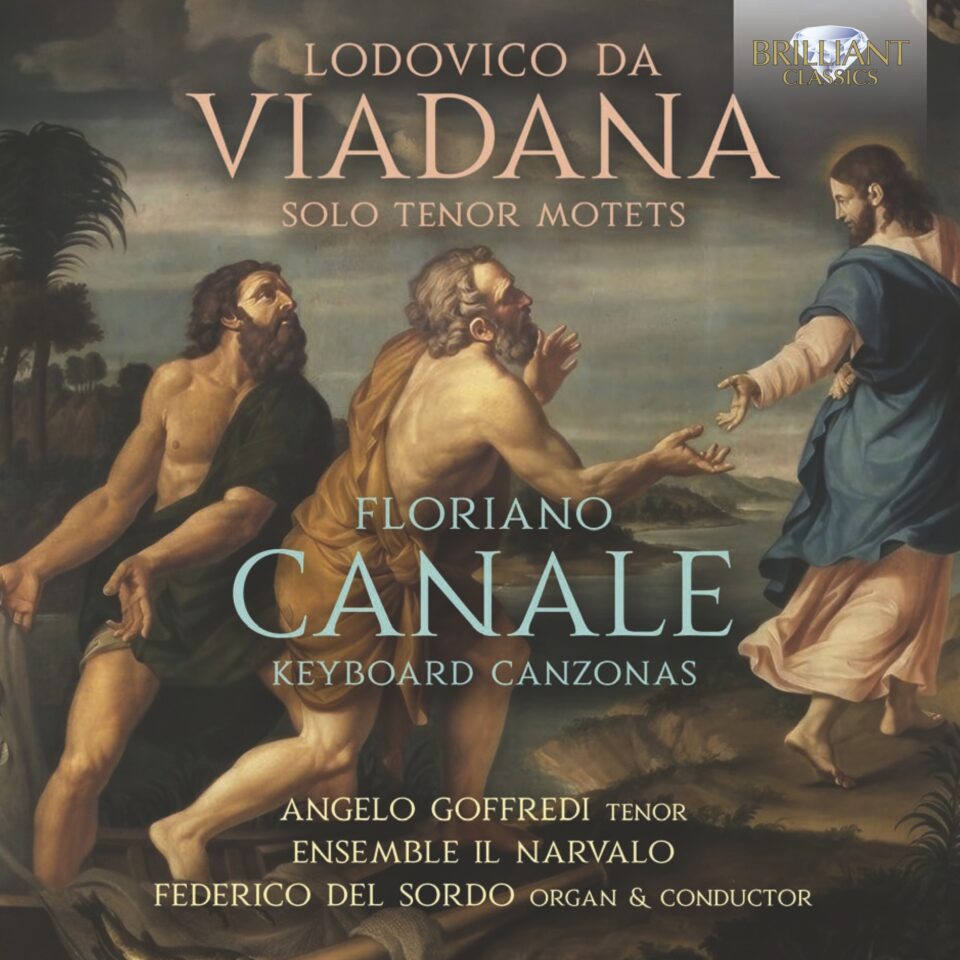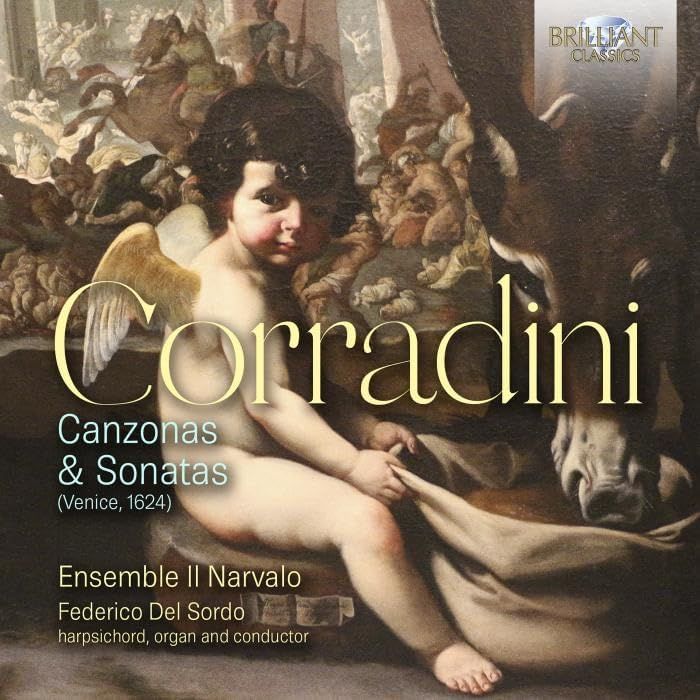Viadana: Solo Tenor Motets; Canale: Keyboard Canzonas
Lodovico da Viadana’s (1564–1627) life as a musician initially unfolded in Mantua, where he was appointed maestro di cappella of the Cathedral on 7 January 1594.
Upon the cessation of this position (likely in 1597), he moved to Venice (mainly to oversee the printing of his works), to Rome (where he claims to have conceived of the concept and function of basso continuo), to Padua, Cremona (where he held the position of maestro di cappella at the convent of S. Luca from 1602), Concordia (where he stayed until 1609), and finally to Fano, where he remained, still holding the position of maestro di cappella, until March 1612.
Later, he continued his compositional activity in his hometown of Viadana (part of the Duchy of Mantua) and its surroundings. He died in Gualtieri in 1627.
This album presents some of his Ecclesiastical Concertos.
Among those of his Opus12 (1602, Venice) are a series of compositions (which he called Concertos) for the unusual forces of tenor and basso continuo. The stylus gravis adopted by the composer often alternates with more lively passages that emphasize the meaning and liturgical pathos of the text.
Complementing Viadana’s concertos are five of the 19 Canzoni da sonare a quattro & otto voci by his Brescian contemporary Floriano Canale (1541–1616) from Canale’s First Book of Keyboard Canzonas (Venice, 1600).
Finally, there is a motet by Viadana calling for performance on solo cornett with basso continuo.
Angelo Goffredi tenor
David Brutti cornett
Ensemble Il Narvalo
Federico Del Sordo organ & conductor
Other information:
Recorded November 2023 in Mantua, Italy.
Bilingual booklet in English and Italian contains liner notes by Federico del Sordo, profiles of him, the tenor and the ensemble, and the Latin sung texts with English translations
1 Lodovico Grossi da Viadana: Concerto à soprano over cornetto (Fratres ego enim)
2 Lodovico Grossi da Viadana: Veni domine et noli tardare
3 Floriano Canale: Canzon la ugona
4 Lodovico Grossi da Viadana: O altitudo
5 Floriano Canale: Canzon la averolda
6 Lodovico Grossi da Viadana: Congratulamini
7 Floriano Canale: Canzon la bevilacqua
8 Lodovico Grossi da Viadana: Hunc preclarem
9 Lodovico Grossi da Viadana: Veni sancte spiritus
10 Floriano Canale: Canzon la fenarola
11 Lodovico Grossi da Viadana: Dum complerentur
12 Lodovico Grossi da Viadana: Ego autem
13 Lodovico Grossi da Viadana: Concerto à soprano over cornetto (Accipite et manducate)
14 Lodovico Grossi da Viadana: Memento salutis
15 Floriano Canale: Canzon la nuvolina
16 Lodovico Grossi da Viadana: Salve corpus Iesu Christi
17 Floriano Canale: Canzon la canobbia
18 Lodovico Grossi da Viadana: Quam dilecta tabernacula




